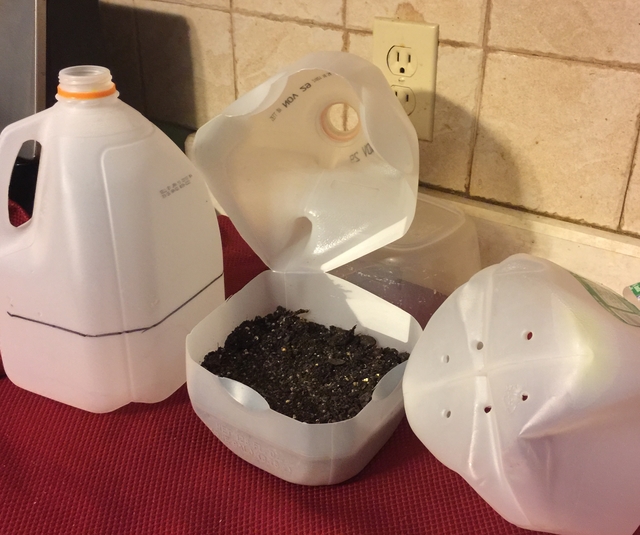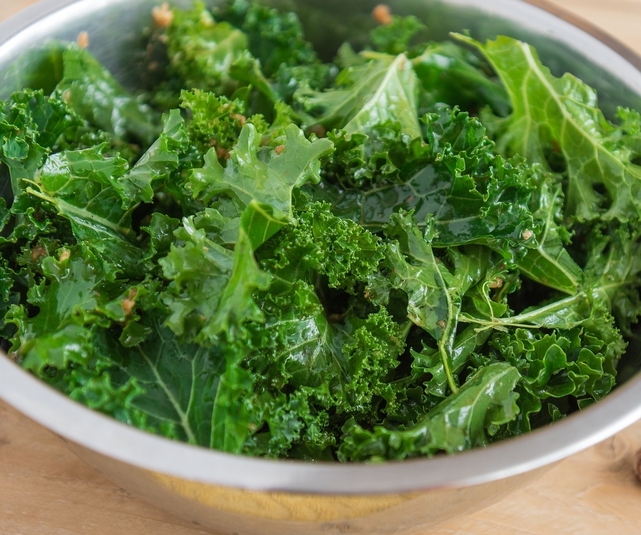
Growing Kale
A hardy biennial usually grown as an annual.Height 12-18" Width 8-12"
When it comes to Kale in salads, Kale adds substance, color, and most importantly nutrition. Its colorful leaves are packed with vitamins and minerals. Kale's leaf texture can range from deeply puckered to deeply frilled.
Types:
Curley Leaf (Scotts Kale). Noticeable pungent flavor with a peppery quality....
Dinosaur Kale. Hearty leaves that are tall and narrow. It retains its firm texture even after cooking. It is slightly sweeter with a more delicate taste.
Red Russian Kale. Flat, fringed leaves that resemble large Arugula leaves. Great sweet flavor with a bit of pepper.
Rape kale (aka Leaf and Spear). A cross between a curly leaf and plain leaf.
Try Audible and Get Two Free Audiobooks
Starting Seeds of Kale
Seed Depth: 1/2"
Seed Spacing: 3"
Days to Germinate: 5-7 days.
Days to Harvest:
70-95 from seed. 55-75 days from transplants.
Seed Longevity: 2 years.
Sowing Indoors:
Spring: Sow 5-7 weeks before your last average frost date. Plant out as transplants 1-2 weeks before your average expected frost date.
Sowing Outdoors:
Spring: Direct sow 2-4 weeks before your average last frost date or as soon as the soil can be worked.

Winter Sowing
If you haven't tried winter sowing, you're in for a treat. This method is especially good for sowing herbs and greens. Winter sowing is basically sowing seeds in the bottom of a milk jug during the winter, setting the milk jugs outside for the winter and leaving them there until the seeds germinate in Spring.
To see our full Winter Sowing article, click here.

Growing Kale Plants
Plant Spacing: Thin plants to 12-15" apart.
Container Size: 6-8" depth.
Sun/Shade: Part sun/part shade.
Soil: Rich in nitrogen.
Watering: Consistent moisture for best flavor.
Water heavily during the growing season.
Fertilizing:
If grown in nutrient-rich soil, your Kale plants won't need any fertilizer until after the first flush of leaves. Then one side dressing of balanced fertilizer is all that the plant should need for the growing season.
Harvesting Kale
Harvest Kale when the plant is 8-10" high, starting with the outside leaves. To harvest the entire plant, cut 2" above ground level. The plant will sprout new leaves in 1-2 weeks.
Using Kale
- Remove stems before cooking.
- Use young leaves raw in salads
- Substitute Kale for spinach in any recipe.
- Kale chips, kale pesto, sauteed Kale, Kale Quich, Kale Soup, Kale slaw.
Kale can also be used as a garnish!
Storing Kale For Later Use
Although tender green leaves, like Lettuce, can't be preserved well, the thicker leaved greens can be.
Fresh
- Clean and pat dry. Bundle stems lightly, place on a paper towel (to absorb moisture) and wrap in a plastic bag. Keeps in refrigerator for 10 days.
- Steam or saute' leaves, chop them and store in freezer bags.
- Puree with water and freeze into ice cube trays.
- Clean and dry the leaves and store in quart size freezer bags.
- Frozen leaves will keep for 6 months.
- Blanching the leaves for two minutes first will extend freezer storage to 14 months.
~~~~~~~~~~~~~~~~~~~~~~~~~~~~~~~~~~~~~~~~~~~~~~~~~~~~~~~~~~~~~~~~~~~
Kale is one of the most nutrition crops you can grow. I love kale in soups, stir fries, steamed or even eating baby kale leaves in salads. It's often found in mesclun and lettuce mixes to add a deep green color and crunchy texture.
~~~~~~~~~~~~~~~~~~~~~~~~~~~~~~~~~~~~~~~~~~~~~~~~~~~~~~~~~~~~~~
This post may contain Amazon affiliate links and as an Amazon Associate I earn from qualifying purchases without costing you anything extra.
This post may contain Amazon affiliate links and as an Amazon Associate I earn from qualifying purchases without costing you anything extra.













No comments:
Post a Comment
Note: Only a member of this blog may post a comment.